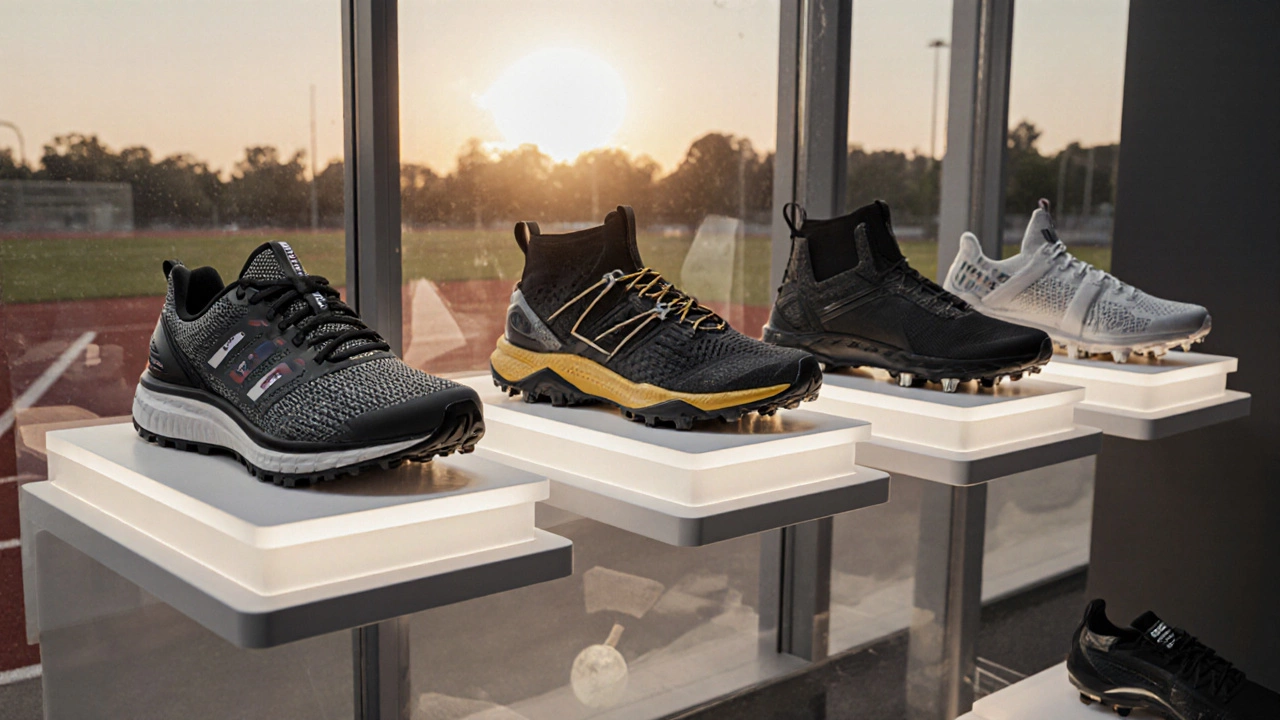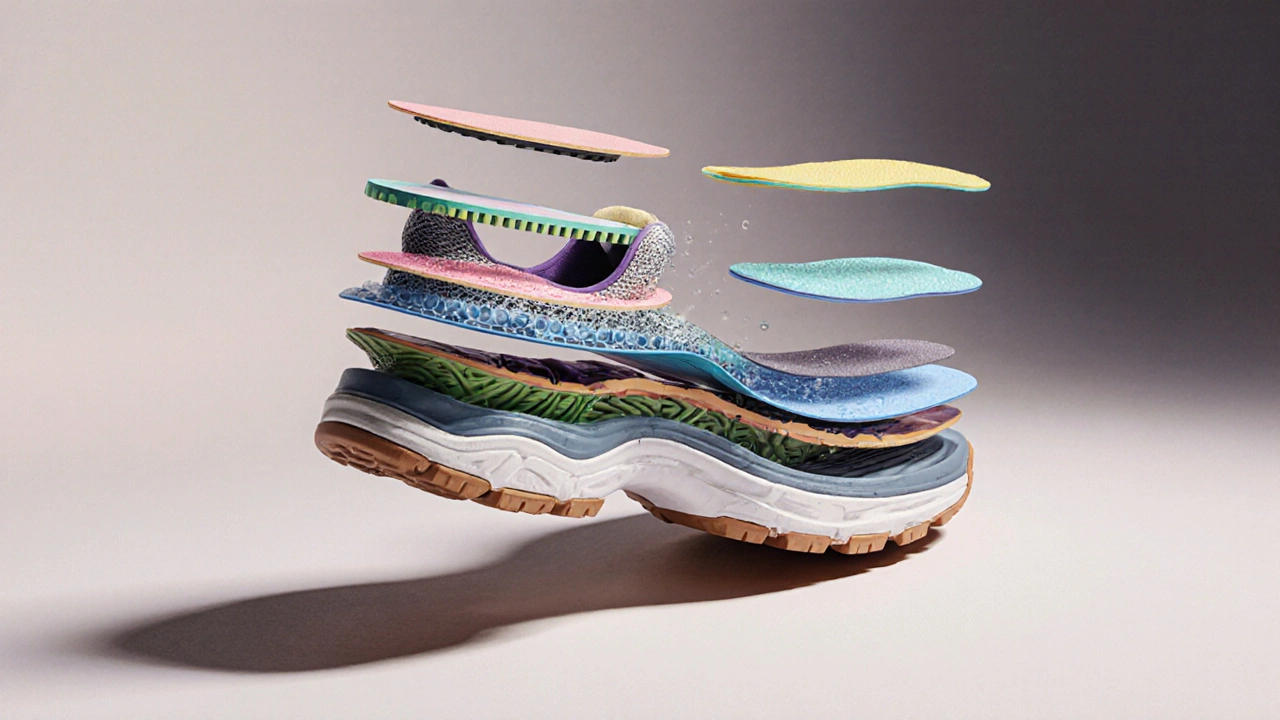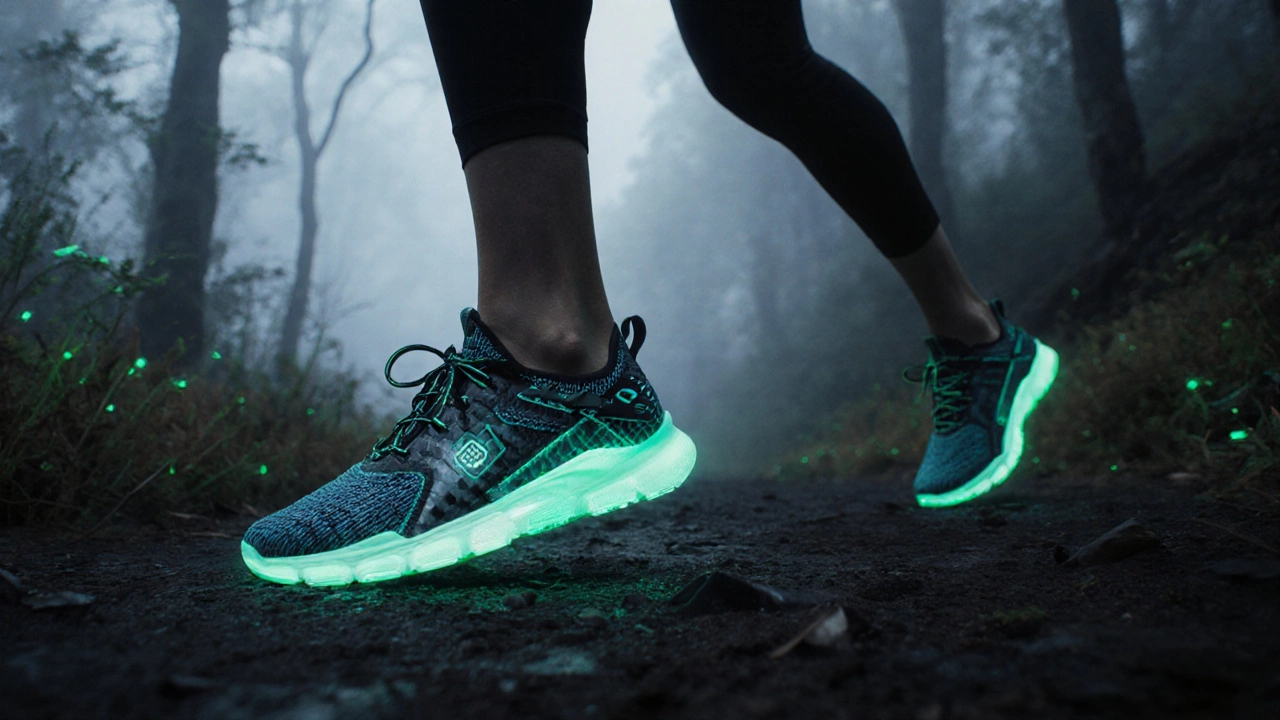Sports Footwear Explained: Types, Features & Buying Guide

Sports Shoe Selector Quiz
Find Your Perfect Sports Shoe
Answer these questions to identify the right type of sports footwear for your needs.
Your Recommendation
When you hear the term Sports footwear is a category of shoes specifically engineered for athletic activities, offering targeted support, cushioning, and traction, you might picture a runner’s sneaker or a soccer cleat. But the world of sports shoes is far broader than that. From trail runners battling mud to basketball players needing ankle stability, each design solves a unique problem. This guide walks you through the main families of sports footwear, key technologies that set them apart, and practical tips for picking the right pair for your sport or workout.
Why sports footwear matters
Using the right shoes can boost performance, reduce injury risk, and keep you comfortable longer. A study by the American College of Sports Medicine found that athletes who wore sport‑specific shoes reduced knee strain by up to 30% compared to generic trainers. That’s because designers match the shoe’s outsole, midsole, and upper to the forces and movements of a particular activity.
Main categories of sports footwear
Below is a quick snapshot of the most common types. Each serves a distinct purpose, and choosing the right one starts with understanding these differences.
| Type | Key Use‑Case | Typical Outsole | Special Feature |
|---|---|---|---|
| Running shoes | Road or treadmill running | Smooth rubber with flex grooves | Cushioned midsole (e.g., EVA, Boost) |
| Training shoes | Gym, cross‑training, HIIT | Mixed tread for multi‑directional moves | Stable heel counter, lateral support |
| Cleats | Soccer, football, rugby | Metal or plastic studs | Enhanced traction on grass or turf |
| Basketball shoes | Indoor basketball courts | High‑traction rubber pattern | Extra ankle support, Zoom cushioning |
| Trail shoes | Off‑road running, hiking | Deep lugs, rock‑plate protection | Water‑resistant uppers, reinforced toe |
Core components that define a shoe
Every pair of sports shoes shares a few building blocks. Knowing what they do helps you decode marketing hype.
- Upper - the breathable or waterproof material that wraps your foot. Mesh keeps it cool; leather adds durability.
- Midsole - the cushioning layer, typically made of EVA, PU foam, or proprietary foams like Nike’s React. This absorbs impact.
- Outsole - the rubber tread that contacts the ground. Its pattern and material dictate grip.
- Insole - removable footbed; some include orthotic‑grade arch support.
- Heel counter - a stiff piece that stabilises the rear foot, crucial for lateral movements.
Manufacturers often brand these parts with catchy names-Boost, Zoom Air, Fresh Foam-but the underlying material science remains similar.

How to choose the right pair
Follow these steps to land on a shoe that feels like it was made just for you.
- Identify your primary activity. If you split time between running and weight‑lifting, a versatile training shoe may be better than a specialized runner.
- Know your foot type. Check your arch by doing the wet‑foot test. Low arches benefit from motion‑control midsoles; high arches need extra cushioning.
- Fit matters more than size. Measure both foot length and width. A snug toe box without pressure points is ideal.
- Test the motion. In a store, jog a few steps, do a lateral shuffle, and try a quick jump. The shoe should stay stable.
- Consider durability vs. weight. Trail shoes tend to weigh more but last longer on rough terrain; racing flats are feather‑light but wear quickly.
- Set a budget. Good sports shoes range from $60 for basic trainers to $250+ for high‑performance models with carbon plates.
Remember, you don’t need to replace every pair every season. Most experts recommend swapping running shoes every 300‑500km (≈200‑300miles) or when you feel a loss of cushioning.
Common pitfalls and how to avoid them
- Buying on hype alone. A celebrity endorsement doesn’t guarantee fit. Always try before you buy.
- Choosing the wrong category. Wearing cleats on a gym floor can damage the surface and your feet.
- Ignoring foot shape. A narrow shoe on a wide foot causes blisters; a wide shoe on a narrow foot can feel sloppy.
- Neglecting break‑in time. Some models, especially leather‑based basketball shoes, need a few sessions to soften.

Future trends in sports footwear
The industry is moving toward smarter, greener shoes. Here are two trends gaining traction in 2025.
- Carbon‑fiber plates. Initially popular in elite marathon shoes, they’re now appearing in mid‑range trainers, offering a noticeable spring‑back effect.
- Recycled materials. Brands like Adidas and Saucony are using ocean‑plastic yarns for uppers, cutting carbon footprints by up to 30%.
As sensors become cheaper, expect shoes that track stride length, ground‑contact time, and even foot temperature-data that can feed directly into training apps.
Quick reference checklist
- Know your sport → pick the right shoe type.
- Check arch type → select cushioning or stability.
- Measure foot length & width → avoid generic sizing.
- Try on with socks you’ll actually use.
- Assess wear pattern after 200km → replace if needed.
- Set a realistic budget → don’t overspend on features you won’t use.
Whether you’re hitting the trail, the court, or the gym, the right pair of sports footwear can be the difference between a great session and an injury. Use this guide as a roadmap, and you’ll walk away with shoes that feel like an extension of your own body.
Frequently Asked Questions
Do I need different shoes for indoor and outdoor workouts?
Yes. Indoor gyms often have smooth floors that favor training shoes with a grippy rubber sole, while outdoor runs benefit from trail shoes with deeper lugs for traction on uneven terrain.
How often should I replace my running shoes?
Most experts suggest swapping them every 300‑500km (200‑300miles) or when you notice a loss of cushioning, even if the outsole still looks okay.
Can I use the same shoes for running and basketball?
It’s not ideal. Basketball shoes have extra ankle support and a different tread pattern designed for quick cuts, whereas running shoes prioritize forward cushioning. Using one for both can increase injury risk.
What’s the difference between a cleat and a stud?
Both are protrusions for grip, but “cleats” usually refer to metal or plastic spikes used on grass fields, while “studs” are often rubber or softer metal used on artificial turf.
Are high‑price shoes always better?
Not necessarily. Premium shoes often incorporate advanced foams or carbon plates, which help elite athletes. For casual users, a well‑designed mid‑range shoe can offer similar comfort and durability.
